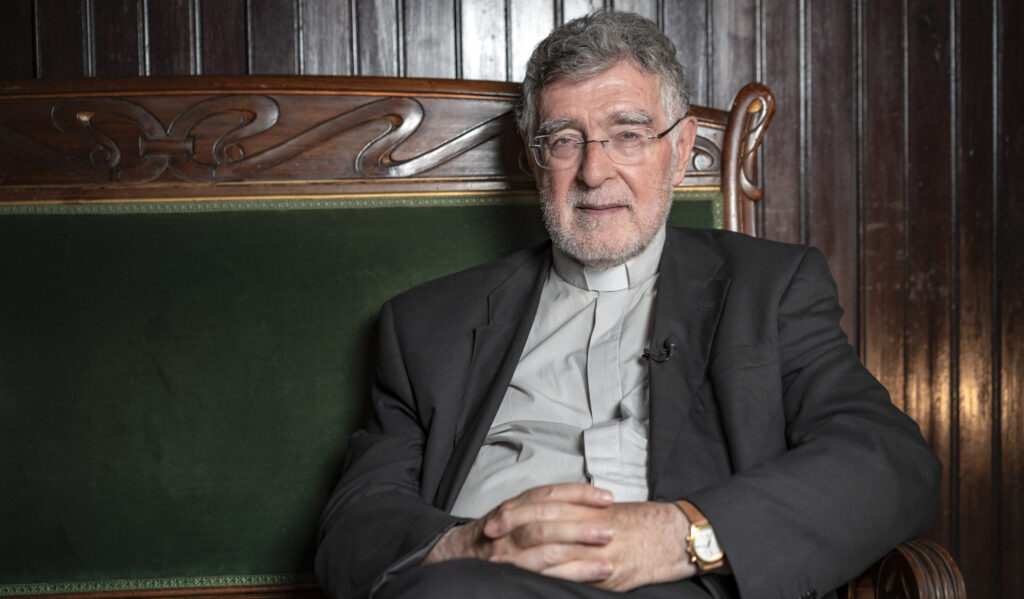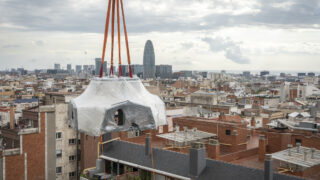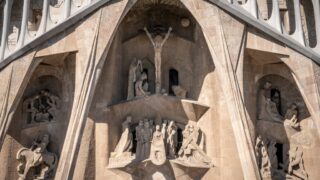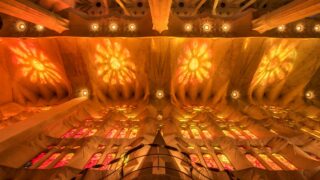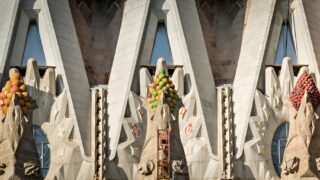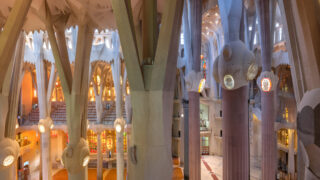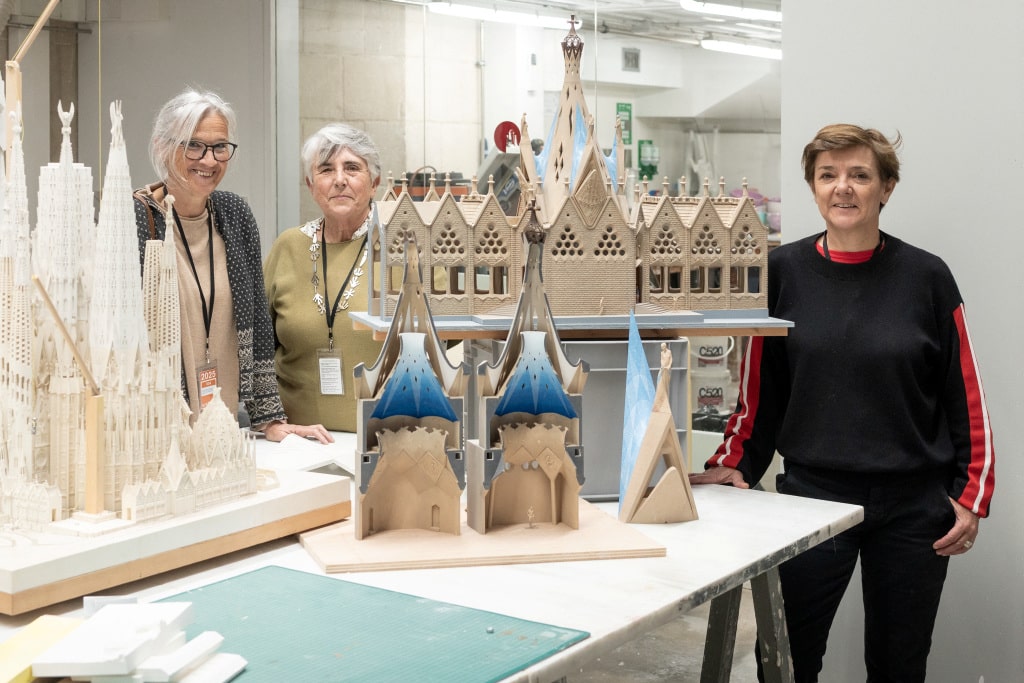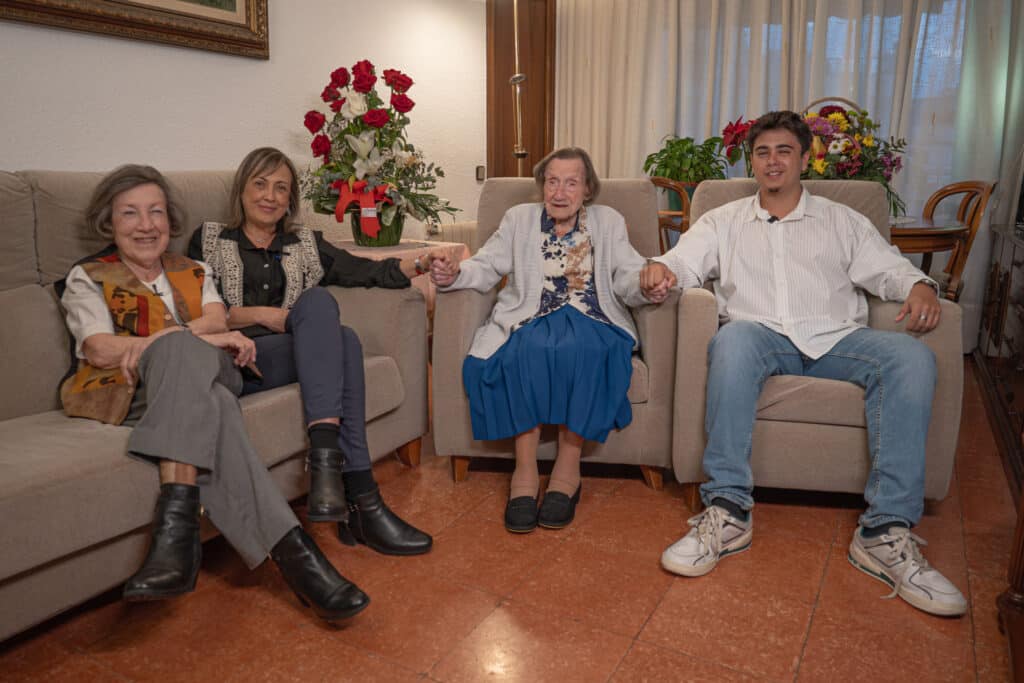Armand Puig i Tàrrech is a priest, holds a PhD in Biblical Sciences and is currently president of the Holy See’s Agency for the Evaluation and Promotion of Quality in Ecclesiastical Universities and Faculties, based in Rome. He has served as both dean and rector of the Theology Faculty at Ateneu Universitari Sant Pacià in Barcelona. Additionally, he coordinated the translation team for the Bíblia Catalana Interconfessional (Catalan Interconfessional Bible). The proximity of his hometown, Selva del Camp, to Antoni Gaudí’s sparked his interest in the architect’s life and led him to study Gaudí. His latest book, Antoni Gaudí, vida i obra(Pòrtic, 2024), is one of the most complete biographies of the architect and has won him the 2025 Abat Marcet award. Previously, he also published La Sagrada Família segons Gaudí and Arquitectura i símbol a la Sagrada Família. He is currently a member of the Sagrada Família Theology Committee as well. Taking advantage of the upcoming Gaudí Year 2026, we met with Armand Puig at the parish of the Basilica of Saints Justus and Pastor, in Barcelona, where he is the rector, to talk about the architect’s professional and personal sides.
Childhood and inspiration
What were Gaudí’s ties to Camp de Tarragona?
The Gaudí family came from two towns. On his father’s side, from Riudoms, where the family home was located, and his maternal lineage came from Reus. So, he identified as being from both Reus and Riudoms. In any case, Gaudí was born on June 25, 1852 in the city of Reus and was baptized the next day in the priory parish of Sant Pere in the same city.
What were his childhood and family background like?
Gaudí, the last of five siblings, had a quiet childhood. He came from a family of artisans, meaning they weren’t farmers or herders. They worked a trade, which gave them some social status, basically lower middle class. His parents were well known and the city of Reus and the town of Riudoms and its events marked them. So, Gaudí was like a sponge in his childhood, absorbing customs, traditions, devotions, ways and later teachings, which he received at a school run by Francesc Berenguer until he was 9 and the Escolapis school in Reus until he was 16.
So, even though he wasn’t from a wealthy family, his parents encouraged his education
We don’t have much information about his parents, but we do know that they gave their children an education. When Gaudí was 16 years old, the family sold their home in Reus and moved to Barcelona. The following family members moved with Gaudí: his father, mother, aunts, brother Francesc and sister Rosa.
«Gaudí was like a sponge in his childhood, absorbing customs, traditions, devotions and ways»
Why did they decide to move to Barcelona?
I think it was to give their children a proper education. The oldest wanted to study medicine at Barcelona Clínic and the youngest, Antoni Gaudí, was good at geometry, the mother of architecture as the source of geometric shapes like paraboloids and hyperboloids. The first to see that the young boy had a gift for geometry was Pere Sallarès at the Escolapis school, although he wasn’t as good at all his subjects. Geniuses always fly higher, and what truly interested Gaudí was geometry, meaning architecture. He felt this vocation ever since he was a little boy.
In fact, when he got his degree in architecture, the head of the school said, “We have given a degree to a madman or a genius, time will tell.” What do you think?
Our readers will have to judge for themselves (he says smiling). I think what a madman makes is mad and a genius, ingenious. But inside a genius there is always a bit of madness, because there is also great creativity. For me, though, Gaudí was a genius.
«When he was young, he was good at geometry, the mother of architecture»
Gaudí was in fragile health as a child and spent long periods convalescing, which he used to observe his surroundings. How do you think this affected his childhood and how did it influence his work as an architect?
Gaudí was very observant. He couldn’t really play football or other sports because he was weak and had rheumatism in his feet. Sometimes they took him to Mas de la Calderera in Riudoms on a little donkey so he wouldn’t have to walk. Observation, though, isn’t subject to health; you’re either observant or you aren’t. And Gaudí was. One story from his childhood tells that he asked why chickens have wings but don’t fly. The reflection of a child whose eyes take it all in. He recreated everything he observed when he was young, perhaps reappearing when he was 20, 30, 40 or 50. He had penetrating bluish-green eyes.
«Gaudí was very observant. His eyes took it all in»
Would you say the family’s trade as potsmiths also influenced his development as an architect?
Absolutely. A potsmith had to imagine how a flat surface could be turned into one with height, width and depth. He, as the son of potsmiths, was used to thinking about objects in this way, in three dimensions. There was also a branch of the family that were fishermen in the Serrallo neighbourhood of Tarragona, so the sea was another great visual reference for him. Potmaking and the sea had a huge impact on Gaudí because they taught him to capture reality with the necessary depth. When you look at the Sagrada Família, it seems enormous. Really though, it isn’t that it is so big, but that Gaudí has done so well at capturing the depth that he created a space that seems larger than it actually is.
«Potmaking and the sea had a huge impact on Gaudí’s perception of depth»
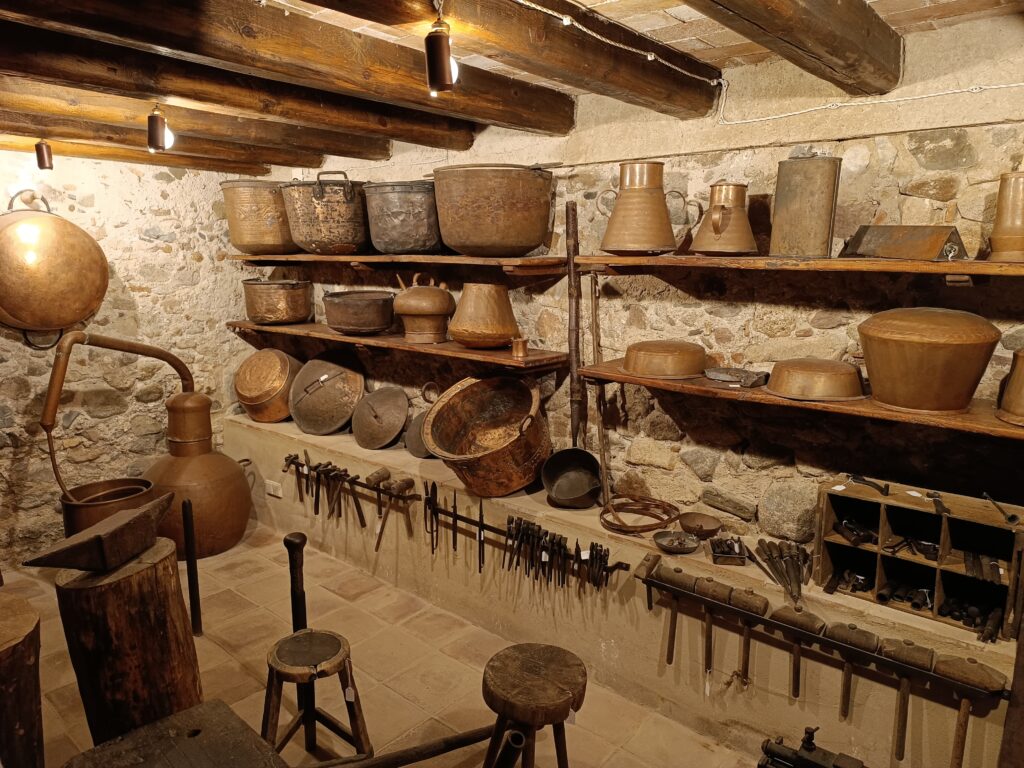
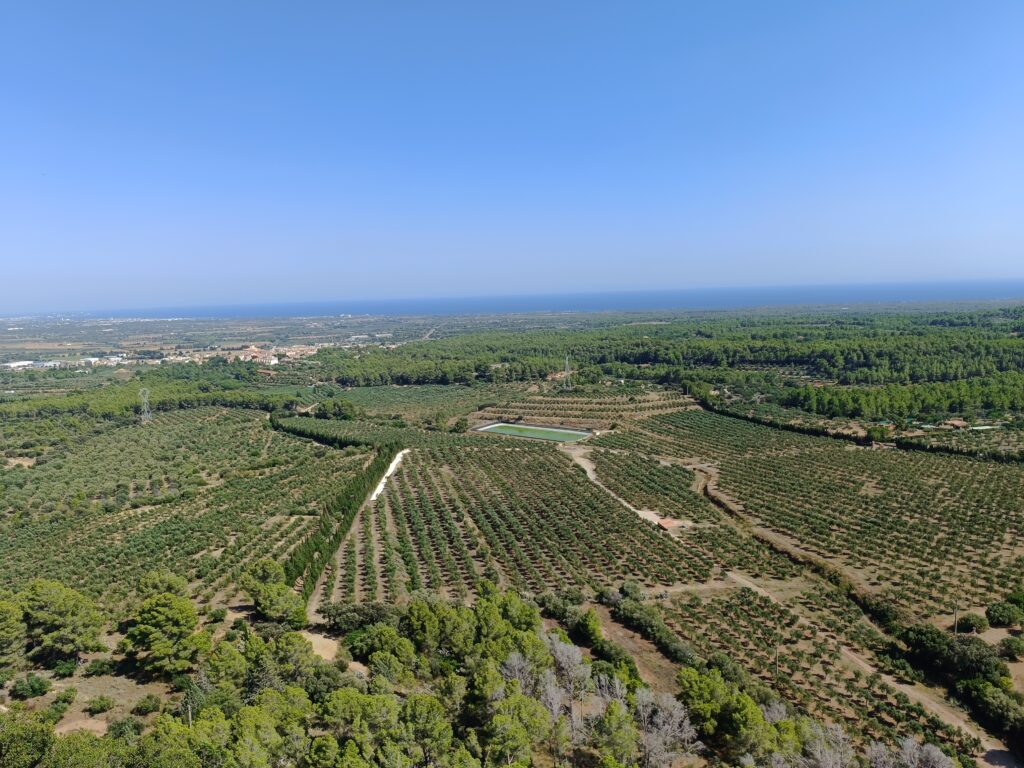
Recreation of the potsmith workshop at the Gaudí family home in Riudoms (left). Panoramic views of Camp de Tarragona with the sea in the background (right)
Why is it important to know where Gaudí lived as a child to understand his architecture?
He often called himself an architect from Camp de Tarragona. His main reference was Lluís Bonifàs, the great baroque sculptor from Valls, drawing inspiration from all the colours, shapes and textures of the landscape in this area. One example is the twelve fruit baskets at the Sagrada Família, which are filled with the fruit from Mas de la Calderera in Riudoms, and the chestnuts, which are from the Prades mountains. So, the fruit represented is what he picked, touched and ate as a child.
«The fruit represented at the Sagrada Família is what he picked, touched and ate as a child»
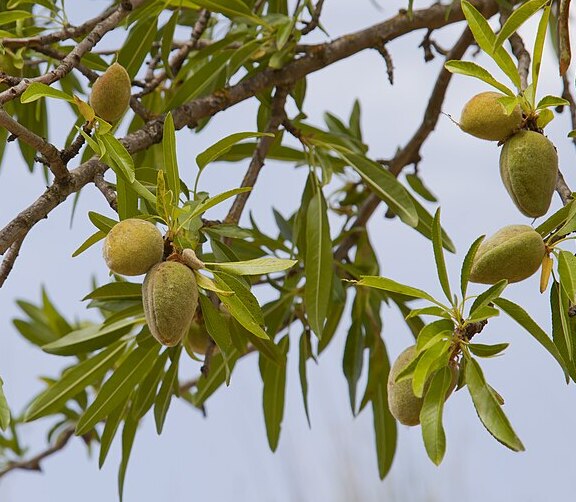
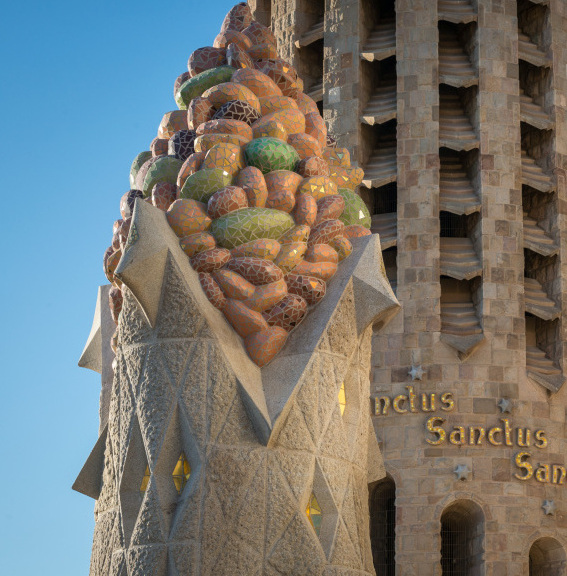
Almond tree (left) and basket of almonds on a side nave on the Passion façade side of the Sagrada Família (right)
Where did Gaudí get inspiration for the Sagrada Família?
His inspiration for the Sagrada Família came from many places, but one of the clearest sources was his project for the Catholic missionaries in Tangier, Africa. In 1893, Gaudí began sketching this project, which he kept in his workshop even though it was never built. Isidre Puig Boada and other architects saw the drawing before the fires of 1936 and there is still a photo of it.
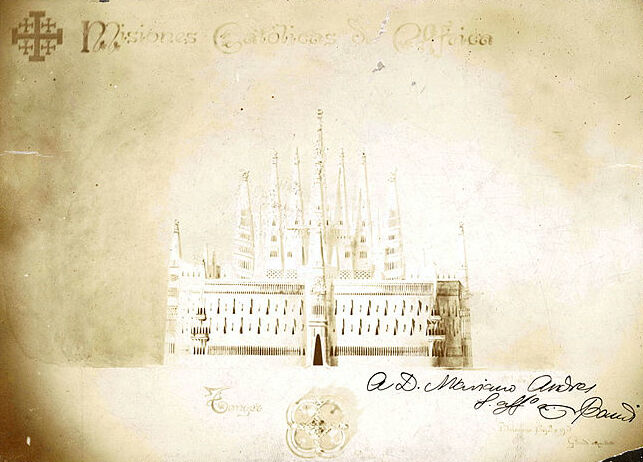
Photograph of the drawing by Antoni Gaudí of the Franciscan Missions in Tangiers project
And nature?
He said that nature was his master, as the work of God that the architect should recreate. At the Sagrada Família, he worked with natural models a lot, even hanging up a donkey and making a mould from it for the sculpture group of The Flight to Egypt. Gaudí was a hyper-naturalist.
What role did religion play in his family?
Gaudí was naturally very religious. His parents sent him to Escolapis school, where he took part in religious ceremonies, and throughout his life he was very devoted to the Virgin Mary, particularly Our Lady of Mercy in Reus. When he was preparing for his first communion, he discovered catechism with Archbishop Costa i Borràs, and these teachings later inspired the Glory façade. When he came to Barcelona, he experienced a crisis of faith, as is common and normal for a young man arriving in a big city and going to university. Nevertheless, in 1883 he was asked to take over the Sagrada Família, which wasn’t a frivolous commission and had to be taken seriously. So, the seed of his childhood faith would germinate as an adult, blooming into a great fruit.
It has been said that Gaudí was devoted to Our Lady of Mercy in Reus. What is the connection between this virgin and the Chapel of the Assumption currently being built at the Sagrada Família?
Like everyone in Reus, as a child Gaudí went to the Santuari de Misericòrdia often for the feast day, pilgrimages, mass, etc. This shrine was a spiritual, mental and visual reference for him. This is why he decided to dedicate the Chapel of the Assumption at the Sagrada Família(which is being built behind the apse) to Our Lady of Mercy; and the dome features the virgin’s profile. Gaudí also made a standard for the canonical coronation of Our Lady of Mercy in Reus, which he and other residents of the city offered during a pilgrimage. This piece was destroyed in 1936, but there are still photos.
How would you define his style?
Gaudí absorbed and synthesised architectural styles from throughout human history, from the Egyptians to the Greeks and Romans, Byzantine and Romanesque and Gothic. The came a point when he, a boy from Reus, said that in Barcelona he was “improving on Gothic”, which is the longest lasting European style. This may seem pretentious, but Gaudí wasn’t pretentious. He had a great sense of his own possibilities and the skills he believed God had given him.
Gaudí in Barcelona
Knowing he was a creature of habit, what was Antoni Gaudí’s routine like when he lived at Park Güell?
As several people have explained, from 1906 to 1925, he used to wake up early and leave Park Güell to go to the eight-o’clock mass at his parish, Sant Joan de Gràcia. While there, he took communion. After mass, he went to the Sagrada Família, where he worked, ate frugally and rested a bit in the afternoon. He tended to carry nuts in his pockets from the tenant on the family land in Riudoms because they are very nutritious, lightweight and satiating. After he walked to Sant Felip Neri church, where he prayed and took part in the services. At the end of the day, he walked to Plaça d’Urquinaona, where he purchased the evening edition of the newspaper La Veu de Catalunya and continued walking back to Park Güell. Sometimes his friend Llorenç Matamala accompanied him. Back home, he had an austere dinner and went to bed with the window open.
Gaudí was restrained and his schedule was practically the same every day, except for Sundays, when he went to mass at the cathedral. After mass, he went to the breakwater, where he watched the sea and drew inspiration from its volume. Sometimes he was accompanied by Domènec Sugrañes, his successor. So, he led a typical, repetitive life, but one in which his love of God kept growing, to the point where we could call Gaudí a mystic.
Why did he choose this lifestyle?
He wasn’t like that earlier in life: he smoked cigars, dressed sharply and rode in a horse-drawn carriage. You could call him a dandy. After his crisis of faith in 1894, when he decided to fast, he started following instructions from his mentors and his life changed. He was influenced by people like Bishops Grau, Campins and Torras i Bages, as well as father Casanovas. Gaudí found himself through a life of sacrifice, because he said that nothing is possible without sacrifice, and in 1900 he withdrew completely from all social life and began living as we’ve described.
What was Gaudí’s social circle like before he withdrew?
Before 1900 he went to the opera and was a member of Associació Catalanista d’Excursions Científiques, now Centre Excursionista de Catalunya, and the Lliga de Catalunya movement, which was interested in Catalan history, art and culture; as were his friends Jacint Verdaguer and Joan Maragall. In fact, there is a picture of all three together in Elne. But there came a time when all of that was superfluous to him and he began to lead a much more austere lifestyle. Saintliness was growing inside him.
How is this change in Gaudí reflected in the Sagrada Família, which he devoted his life to?
At first, Gaudí said he could finish the Basilica in ten years. Obviously, he later rectified this and said, “My client is not in a hurry”, and became obedient to God. At this point, he no longer believed he was an architect on his own merit, but because there was something bigger than him that he couldn’t finished and would have to be completed by his successors. This belief calmed him, because the Venetian glass for the tops of the Nativity towers took two or three years to arrive, delaying the completion of the tower of Barnabas, the first and only one he saw finished. He was never concerned about this; he took advantage of the wait to work on other things. So, in Gaudí we see a transformation into someone who understood God’s time, which is not the same as man’s.
«At the Sagrada Família, Gaudí understood God’s time, which is not the same as man’s»
Why is Gaudí in two paintings at Sant Felip Neri church?
Sant Felip Neri church, where Gaudí went regularly, was home to a group of Catholic artists associated with the Cercle Artístic de Sant Lluc, who wanted to dignify art with naturalist motifs and aesthetics that would elevate the spirit. Joan Llimona, who was part of this artistic movement and knew the architect, wanted to pay tribute to him and had him sit as a model for the saints in two paintings that hang inside the church.
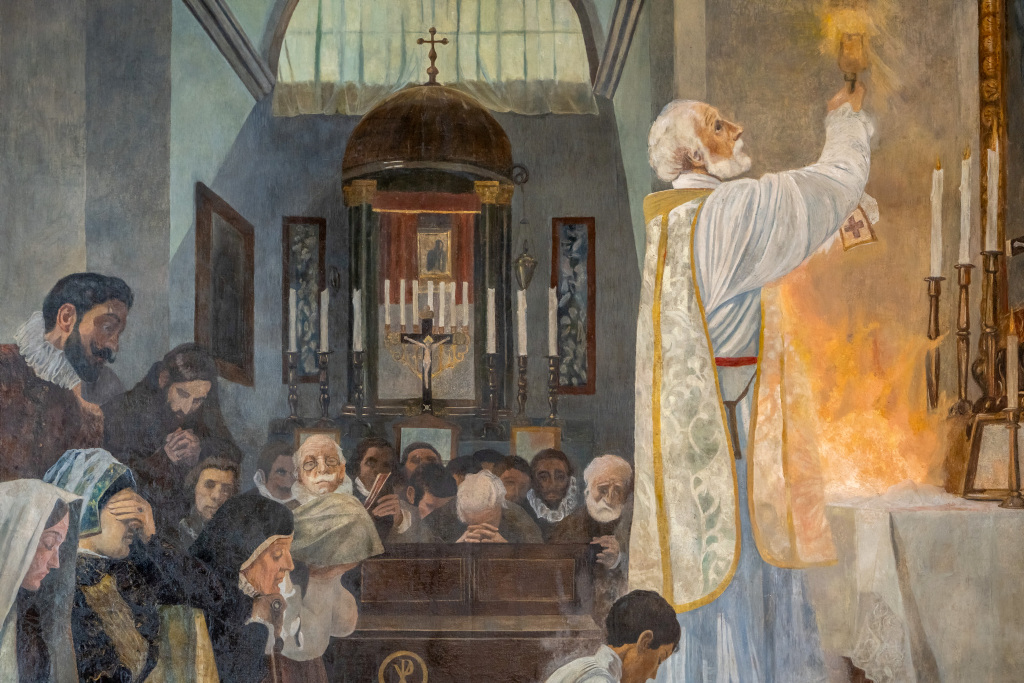
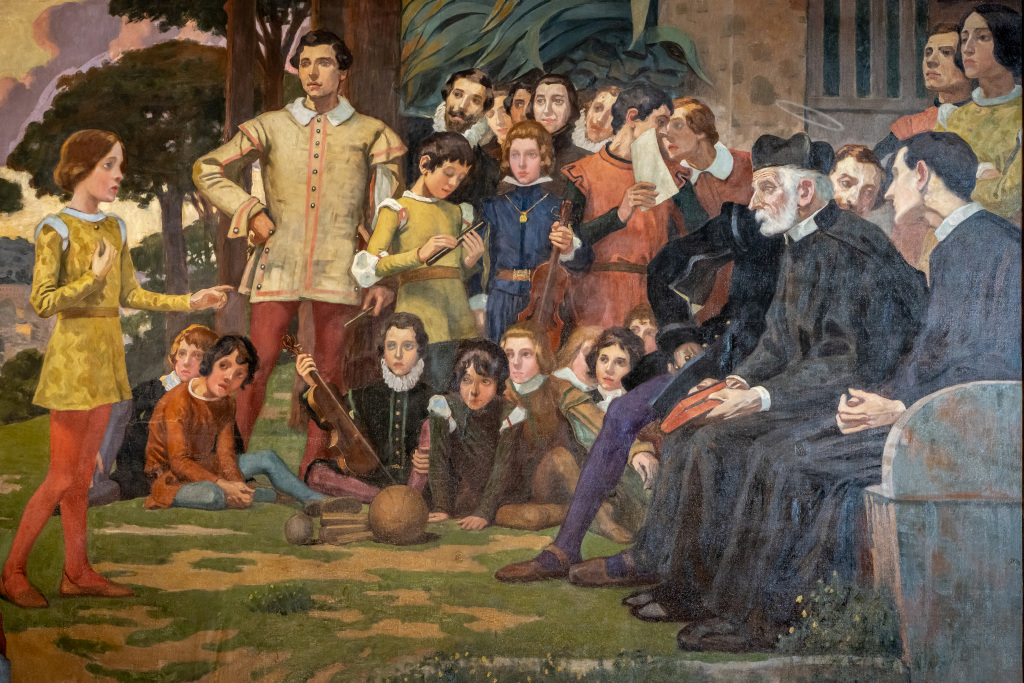
Antoni Gaudí portrayed by Joan Llimona as Sant Felip Neri in paintings that hang inside the church
Final stage
Towards the end of his life, Gaudí devoted himself body and soul to the Sagrada Família. In fact, he is known to have said, «I have no family, friends or fortune, nothing. Now I can dedicate myself entirely to the Temple...»
He said this at a time when his friends and family members, to which he was very loyal, were dying: Eusebi Güell, Torras i Bages, Joan Maragall, his niece Rosa, and more. Gaudí, a very sensitive man, interpreted this series of deaths as an opportunity to focus all his efforts on the Sagrada Família. And this is what made it turn out so well, because he thought about it day and night for quite a few years. This is how he came up with the shape for the bell towers, which have become a symbol of Barcelona, and the solution for the nave, which is the third and came three or four years before he died. Gaudí’s ingenious, perfectionist art is the result of hard work and God’s inspiration. He was the perfect combination of the skills and the gift he received.
With all his work, why did he die nearly penniless?
He spent the money he had while he was alive, much of it he gave away. In terms of assets, he had the house in Park Güell, the one in Reus, Mas de la Calderera and small properties in Riudoms that he donated for a football field and the Reus-Mora train line. And after 1913 he didn’t earn anything for the Sagrada Família. He died completely free of the material trappings of this world.
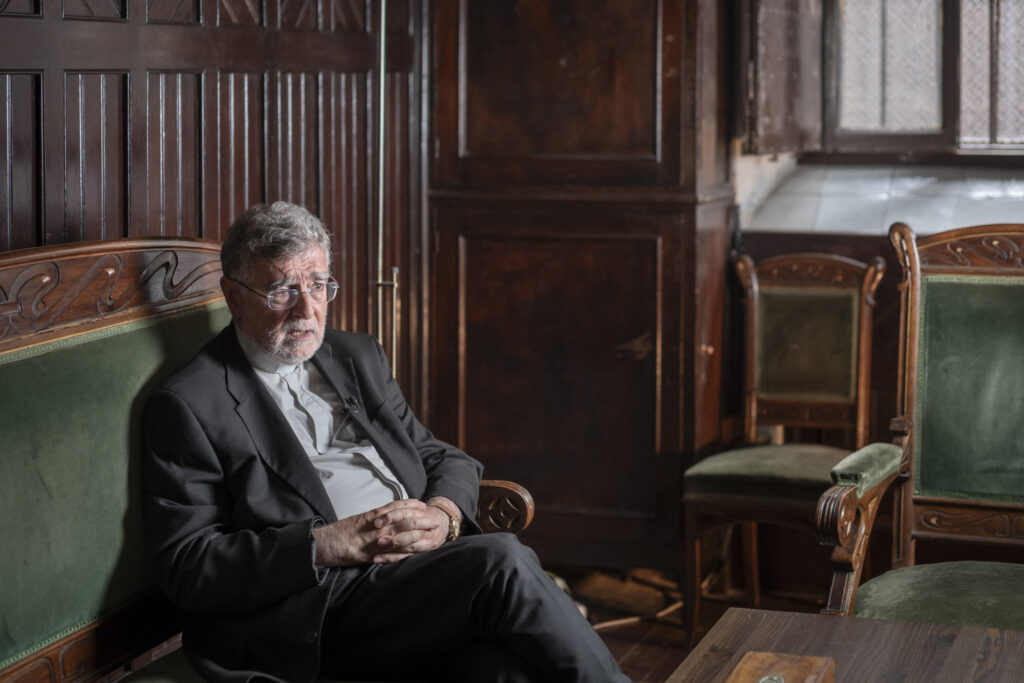
Armand Puig at the parish of the Basilica of Saints Justus and Pastor during the interview
To sum up, how would you describe Gaudí in one sentence?
Gaudí was a genius and a saint. He was a man whose saintliness grew and showed unparalleled skill in architectural creativity. There are great men in every field, but very few geniuses, and I think Gaudí was one of them. His work sums up two personalities: the creative man who was able to recreate the work of God and the person who is able to stand very close to him: that is what we call saintliness.

